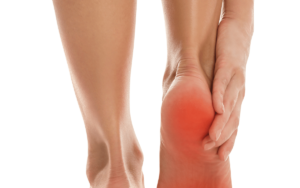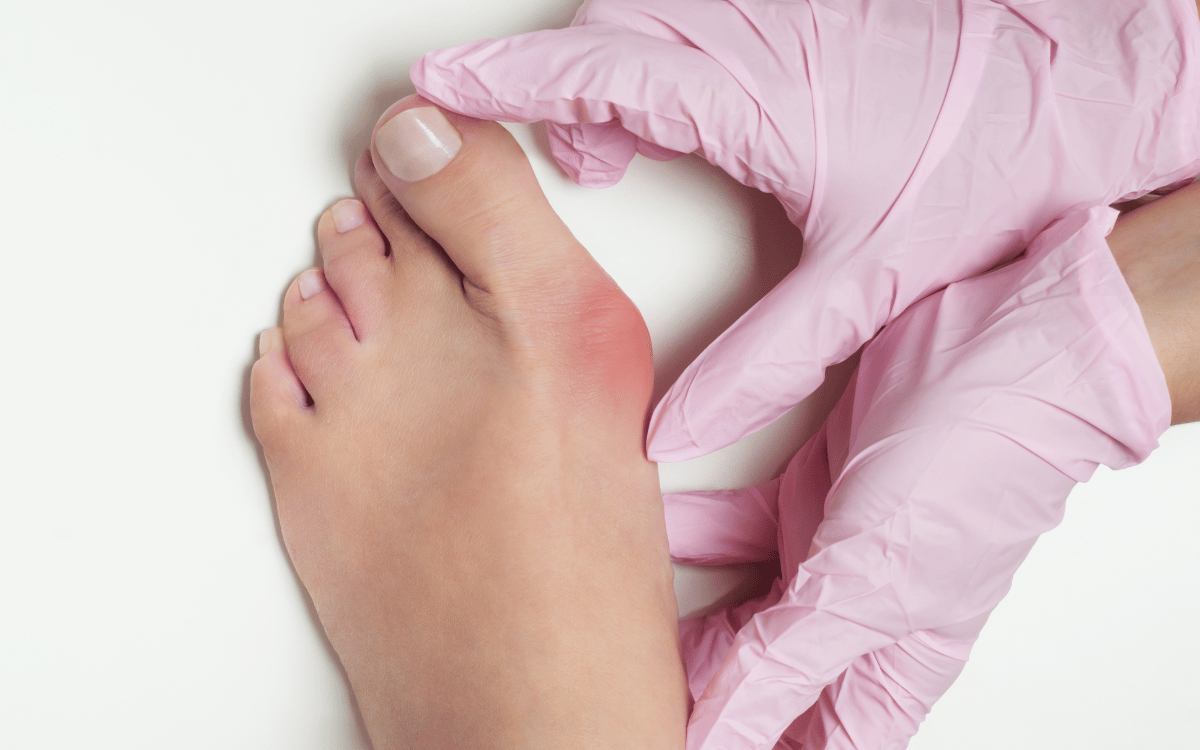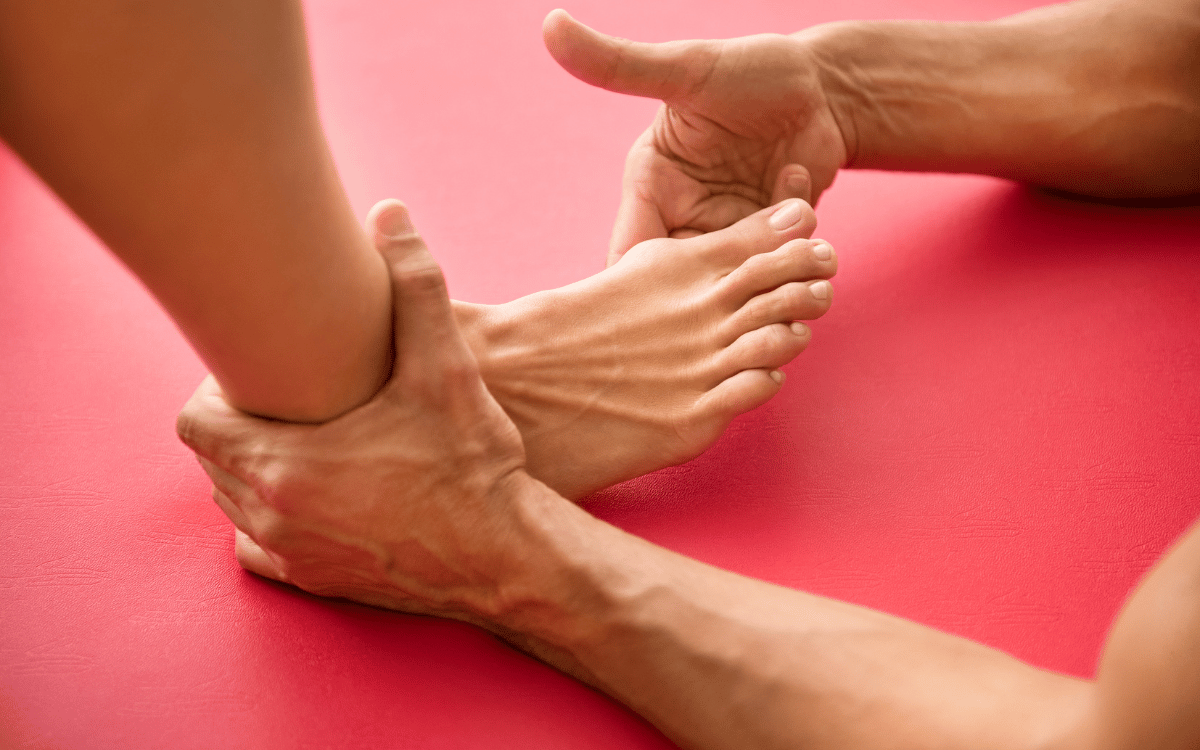Heel pain is commonly caused by plantar fasciitis. Plantar fasciitis is the inflammation of the plantar fascia, which is the connective tissue that runs along the bottom of your foot. Heel pain can also be caused by other conditions, such as Achilles tendonitis, heel spurs, and stress fractures.

Plantar Fasciitis
By far the most common cause of heel pain is a condition known as plantar fasciitis. Plantar fasciitis is the inflammation of the plantar fascia, which is the connective tissue that runs along the bottom of your foot. The plantar fascia is a very strong and resilient piece of tissue, but it can become overloaded and irritated, resulting in heel pain.
Other potential causes of Heel pain and plantar fasciitis
Achilles tendonitis
Achilles tendonitis is an inflammation of the Achilles tendon, which is the large tendon that runs down the back of your leg and attaches to your heel. Achilles tendonitis can be caused by overuse or injury to the Achilles tendon.
Heel spurs
Heel spurs are bony growths that form on the heel bone. Heel spurs do not cause heel pain, but they are often found in people who have plantar fasciitis or other heel pain conditions.
Stress fractures
Stress fractures are tiny cracks in the bone that can occur with overuse. Stress fractures of the heel bone are rare, but they can occur in athletes who put a lot of stress on their feet (such as long-distance runners).
Fat Pad Syndrome
Fat pad syndrome is a condition that occurs when the fatty cushion that protects the heel becomes irritated and inflamed. Fat pad syndrome is often caused by overuse, but it can also be caused by an injury.
Reactive arthritis is a type of arthritis that occurs in response to an infection. Reactive arthritis often affects the heel, and it can cause heel pain and other symptoms.
Heel Bursitis
Bursitis is the inflammation of a bursa, which is a small sac of fluid that acts as a cushion between bones and tissues in the body. Bursitis can occur in any joint, but it is commonly found in the shoulder, elbow, hip, and knee. Bursitis of the heel (known as heel bursitis).
A nerve entrapment in the heel can cause heel pain. The most common nerve entrapment in the heel is called posterior tibial nerve entrapment. This condition occurs when the nerve that runs along the back of your leg becomes compressed or pinched.
Tarsal tunnel syndrome
Tarsal tunnel syndrome is a condition that occurs when there is compression of the nerves in the foot. Tarsal tunnel syndrome can cause heel pain, as well as numbness, tingling, and weakness in the foot.
What are some common treatments for heel pain and plantar fasciitis?
Treatment for heel pain depends on the underlying cause. Common treatments include rest, ice, heat, stretching exercises, and over-the-counter pain medications. If these conservative measures do not relieve heel pain, your doctor may recommend more aggressive treatment options, such as steroid injections or surgery.
Orthotics
Orthotics are commonly used for heel pain. Orthotics are devices that can be inserted into your shoes to help support your feet and improve your heel pain.
Steroid injections
Steroid injections are a common treatment for heel pain. Steroids are anti-inflammatory medications that can help reduce the inflammation and pain associated with heel pain conditions.
Heel raises
Heel raises are an effective way to stretch the plantar fascia and Achilles tendon. To do a heel raise, stand with your feet hip-width apart and your hands on your hips. Slowly raise up onto your toes, holding the position for 10 seconds before lowering back down. Repeat this 10 times.
Stretches
Stretching the calf muscles and plantar fascia can help reduce heel pain. To stretch the calf muscles, stand with your feet hip-width apart and your hands on your hips. Step forward with one leg and lower down into a lunge. Keep your heel down and lean forward until you feel a stretch in the back of your leg. Hold the stretch for 30 seconds before repeating on the other side.
To stretch the plantar fascia, sit in a chair with your legs extended in front of you. Place a towel around the ball of your foot and use your toes to pull the towel towards you. You should feel a stretch along the bottom of your foot. Hold the stretch for 30 seconds before repeating on the other side.
Exercises
There are several exercises that can help reduce heel pain. One such exercise is toe raises. To do this exercise, stand with your feet hip-width apart and your hands on your hips. Slowly raise up onto your toes, holding the position for 10 seconds before lowering back down. Repeat this 10 times.
Another helpful exercise is heel raises. To do this exercise, stand with your feet hip-width apart and your hands on your hips. Place a heel raise under one foot and slowly raise up onto your toes. Hold the position for 10 seconds before lowering back down. Repeat this 10 times before switching to the other foot.
A final exercise that can help reduce heel pain is calf raises. To do this exercise, stand with your feet hip-width apart and your hands on your hips. Place a heel raise under one foot and slowly raise up onto your toes. Hold the position for 10 seconds before lowering back down. Repeat this 10 times before switching to the other foot.
Check out our top tips for heel pain and plantar fasciitis in these videos
Laser Therapy
- Non-invasive and pain-free treatment-Stimulates endorphins for natural pain relief
- Enhances tissue repair and promotes faster healing
- Get back to doing the activities you love sooner
- Enjoy less stress and discomfort from foot pain
- Avoid the need for pain drugs due to the laser unique nature to reduce pain
- Quick and painless
- Feel better after 1 visit
Surgery
Surgery is sometimes necessary for heel pain. The most common type of surgery for heel pain is plantar fasciotomy, which involves cutting the plantar fascia to release the tension and relieve the pain. Surgery is usually only recommended if other treatments have failed to provide relief.
Heel pain can vary in severity from mild to debilitating. It is important to see a doctor if you are experiencing heel pain, as it could be a sign of a more serious condition. Treatment for heel pain will vary depending on the underlying cause. However, common treatments include rest, ice, heat, stretching exercises, orthotics, and over-the-counter pain medications. In some cases, surgery may be necessary thankfully this isn’t common the key is to treat the problem asap.
Foot mobilisation for heel pain
The good news is that is isn’t your only option foot mobilisation is a technique that can be used to treat heel pain. It is a type of manipulative therapy that involves moving the bones and tissues in the foot to reduce pain and improve function. Foot mobilisation is often used in combination with other treatments, such as stretches and exercises.
If you would prefer to address the underlying cause of your heel pain foot mobilisation may be preferable to the other options the benefits of this are:
- improved foot and ankle range of motion
- reduced heel pain
- improved shock absorption
- improved balance and coordination.
- Keep wearing the shoes you love
- Don’t need orthotics
- Avoid the need for cortizone which is only a bandaid approach anyway
- Fix the underlying cause
Benefits of our treatment for heel pain and plantar fasciitis
- No surgery
- Keep wearing a variety of shoes
- No orthotics
- Keep being active through treatment
- Cost effective
- Gentle and doesn’t hurt
- Long term beneficial
- No cortizone
- Offer laser therapy which gives strong pain relief
If you think you might have heel pain, don’t delay in seeking treatment.
Our number is 8966 9300 or visit our website https://sydneyfootsolutions.com.au/new-patient-offer/ We are offering a 65% off expert heel pain assessment just $35. Usually fee $130. Give us a call 8966 9300 or email mailto:[email protected]
If you wanted to read more about why you may have heel pain, please read the blog below for more information https://sydneyfootsolutions.com.au/blog/do-you-wonder-why-you-have-heel-pain Or watch this video talking about our special offer in relation to heel pain



